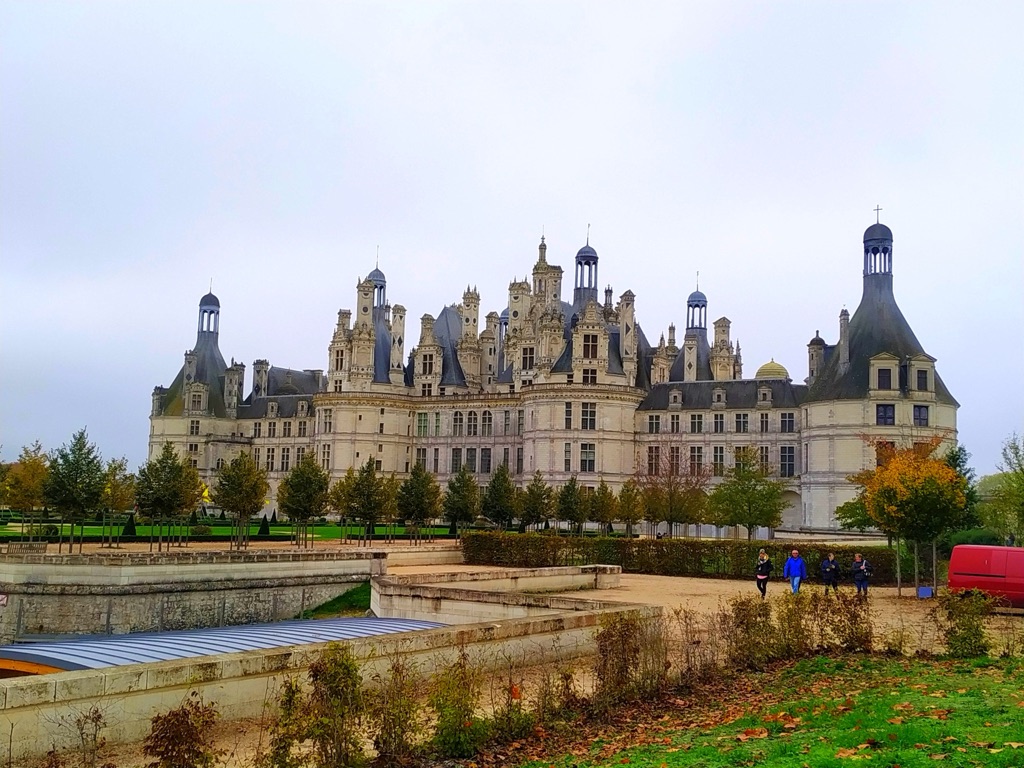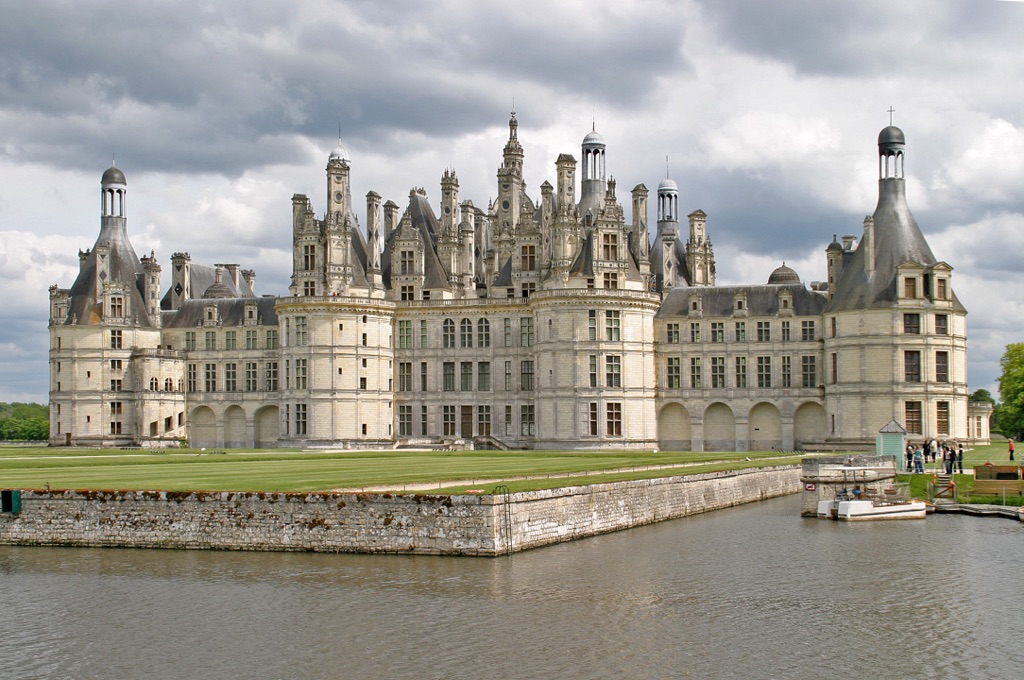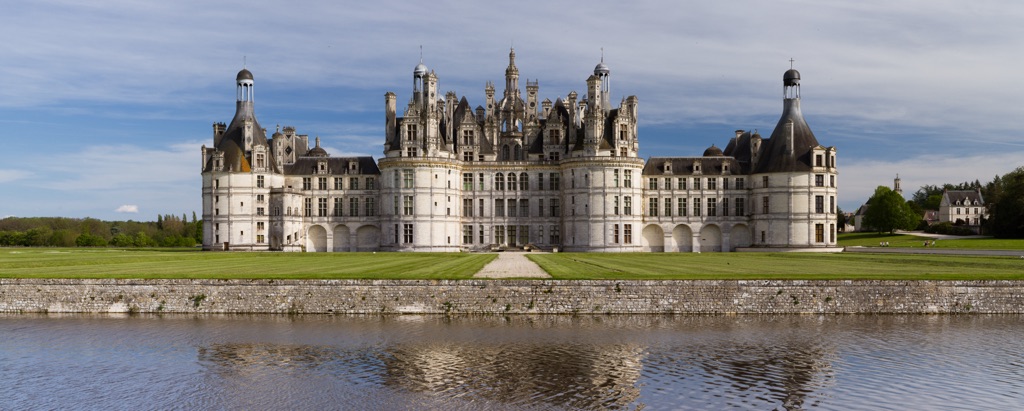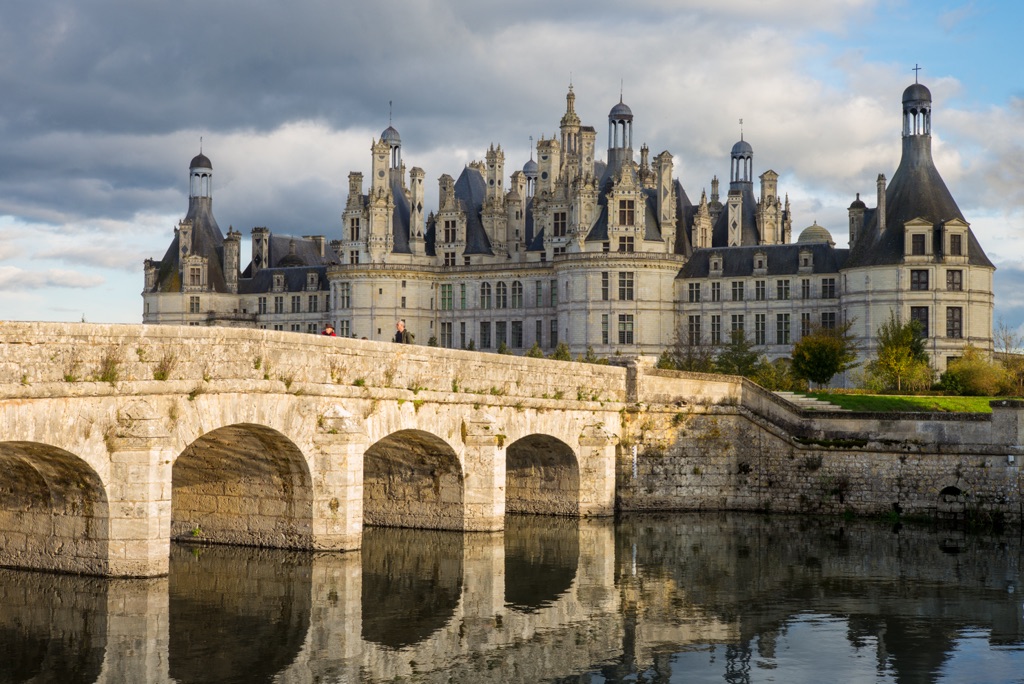The Château de Chambord is one of the most recognizable châteaux in the world, located in the Loire Valley, France. It is a masterpiece of the French Renaissance, blending traditional French medieval forms with classical Italian structures. Commissioned by King Francis I in 1519, the château was intended to serve as a hunting lodge and a symbol of his power and influence. Despite its grand scale, Chambord was never fully completed. It boasts 440 rooms, 365 fireplaces, and a distinctive double helix staircase, often attributed to Leonardo da Vinci. The château has been a UNESCO World Heritage site since 1981 and continues to be a major tourist attraction, drawing visitors from around the globe.
Get your dose of History via Email
Historical Background of Château de Chambord
The Château de Chambord was a bold architectural undertaking initiated by King Francis I. Construction began in 1519, in the heart of the Loire Valley. The king wanted a grand residence to showcase his wealth and power. He also sought a retreat for hunting, as the surrounding forest was rich with game. The château’s design is attributed to Domenico da Cortona, but some believe Leonardo da Vinci, who was residing in nearby Clos Lucé, had a hand in its conception.
Over the centuries, Chambord has seen various phases of occupation and abandonment. After Francis I, it was seldom used by French royalty. During the 17th century, Louis XIV commissioned significant modifications and hosted several spectacular events at Chambord. However, the château fell into disuse after the death of Louis XIV. It was later used as a military hospital during the Franco-Prussian War and suffered damage during World War II.

Chambord’s historical importance extends beyond its role as a royal residence. It has been a canvas for architectural innovation, a witness to political changes, and a symbol of the French Renaissance. The château was also a place of refuge during the French Revolution, where many artworks from the collections of the Louvre and Compiègne were stored for protection.
Despite its grandeur, Chambord was never fully completed or furnished as originally intended. It remained a shell of the king’s ambitions until the 20th century when restoration efforts began. These efforts continue today, preserving the château for future generations to appreciate its historical and architectural significance.
Chambord’s significance was recognized globally when it was inscribed on the UNESCO World Heritage List in 1981. This acknowledgment has helped secure funding and interest in the ongoing preservation of this iconic structure. The château remains a testament to the grandeur of the French Renaissance and the enduring legacy of its royal patrons.
About Château de Chambord
Château de Chambord is an architectural marvel of the Renaissance period. Its construction began in 1519 under the direction of King Francis I. The château’s design is a blend of traditional French medieval forms with classical Renaissance structures. It is renowned for its unique roofscape, which is often compared to a city skyline due to its numerous towers and chimneys.

The most famous feature of Chambord is its double helix staircase, which allows two people to ascend and descend without ever meeting. This design is attributed to Leonardo da Vinci, who was in France during the initial planning stages of the château. The staircase serves as the centerpiece of the château, providing access to its various levels.
The château’s construction required an enormous amount of resources, including stone from the quarries of Bourré. Its walls enclose an area as large as a small city, and the surrounding park is the size of central Paris. Chambord’s scale and complexity were unprecedented at the time of its construction and remain impressive to this day.
Architectural highlights of Chambord include its massive keep, corner towers, and the aforementioned roofscape. The château’s façades are adorned with intricate sculptures and its interiors, though never fully completed, were intended to be just as lavish. The château also features a 32-kilometer wall that encloses the royal hunting park, the largest enclosed park in Europe.
Despite its grandeur, Chambord was not designed for long-term occupation. It lacks the domestic amenities necessary for permanent residence, which suggests that its primary function was to serve as a symbol of royal power and prestige. Today, Chambord is a major tourist attraction and continues to be a site of study for historians and architects alike.
Theories and Interpretations
The Château de Chambord is shrouded in mystery and speculation, particularly regarding its intended purpose and the influence of Leonardo da Vinci. Some historians suggest that the château was designed more for show than for function, as its massive size and layout were not particularly suited for habitation.

The double helix staircase at the heart of Chambord is a focal point of speculation. While no definitive evidence links da Vinci to its design, his presence in the region and his known relationship with King Francis I fuel theories that he contributed ideas to the château’s design.
Another theory about Chambord involves its symbolic significance. The layout of the château, with its central axis and four corner towers, may represent the New Jerusalem, as described in the Book of Revelation. This interpretation suggests that Francis I intended the château to symbolize his divine right to rule.
Historians have also debated the function of the château’s unique terraces and roofscape. Some believe they were designed for theatrical productions or courtly displays, while others argue they had a military purpose, allowing for surveillance of the surrounding area.
Modern scientific methods, such as dendrochronology, have been used to date the timber used in Chambord’s construction. These studies provide insights into the château’s construction timeline and the resources used. Despite these advances, many aspects of Chambord’s history and design remain open to interpretation.
At a glance
- Country: France
- Civilization: French Renaissance
- Age: Construction began in 1519 AD
Conclusion and Sources
- Wikipedia – https://en.wikipedia.org/wiki/Château_de_Chambord
- Britannica – https://www.britannica.com/topic/Chateau-de-Chambord
- World History Encyclopedia – https://www.worldhistory.org/Chateau_de_Chambord/
- UNESCO – https://whc.unesco.org/en/list/933

